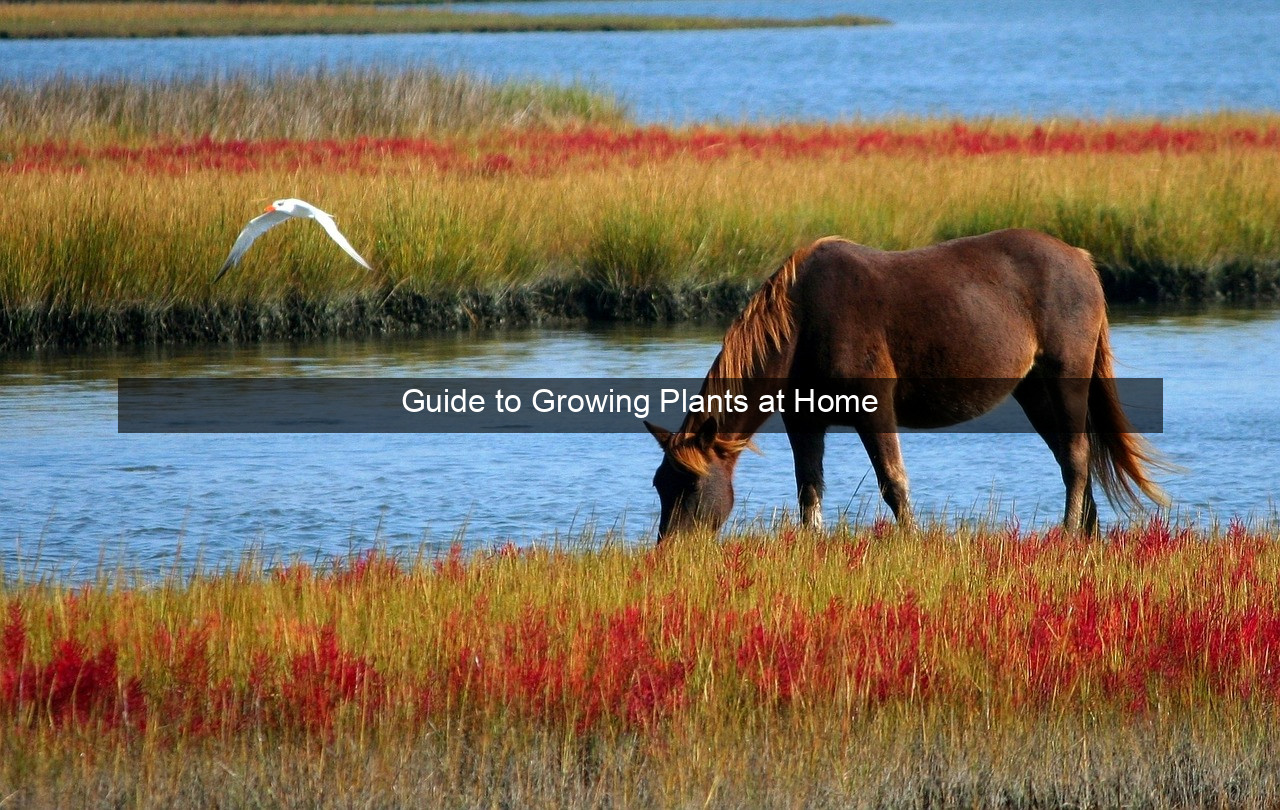Guide to Growing Plants at Home

- Guide to Growing Plants at Home
- A Beginner's Guide to Growing Plants at Home
- Choosing the Right Plants
- Understanding Your Environment
- Easy-to-Grow Options for Beginners
- Considering Your Lifestyle
- Providing Essential Care
- Watering Techniques
- Light and Temperature Regulation
- Soil and Fertilization
- Troubleshooting Common Problems
- Identifying Pests and Diseases
- Addressing Nutrient Deficiencies
- Dealing with Environmental Stressors

A Beginner’s Guide to Growing Plants at Home
Imagine stepping into your home and being greeted by a burst of vibrant green, the air filled with the subtle fragrance of blooming flowers or the fresh scent of herbs. This isn’t a dream, but a reality easily achieved through the rewarding experience of growing plants at home. Whether you have a sprawling garden or a tiny apartment windowsill, cultivating your own green oasis is more accessible than you might think. This guide will provide you with the essential knowledge and practical tips to embark on your indoor gardening journey, transforming your living space into a thriving botanical haven. From choosing the right plants to understanding their specific needs, we’ll cover everything you need to know to nurture your plants from seed to flourishing foliage and beyond. Growing plants not only enhances the aesthetic appeal of your home but also offers numerous benefits, including improved air quality, stress reduction, and the satisfaction of nurturing life. So, roll up your sleeves, get your hands dirty, and let’s dive into the wonderful world of indoor gardening.

Choosing the Right Plants
Understanding Your Environment
Before you rush to the nearest nursery, take a moment to assess your home environment. Consider the amount of natural light your space receives, the temperature fluctuations, and the humidity levels. These factors play a crucial role in determining which plants will thrive in your home. South-facing windows receive the most sunlight, while north-facing windows receive the least. East and west-facing windows offer moderate light. Understanding your environment will help you select plants that are well-suited to the conditions you can provide.
Different plants have different light requirements. Some thrive in bright, direct sunlight, while others prefer indirect or low light conditions. Researching the specific needs of the plants you’re interested in will prevent disappointments and ensure their healthy growth. For example, succulents and cacti thrive in bright light, whereas ferns and peace lilies prefer shadier spots. Matching the plant’s light needs to your home’s light availability is crucial for success.
Temperature and humidity are equally important. Most houseplants prefer temperatures between 65 and 75 degrees Fahrenheit. Avoid placing plants near drafts or heating vents, as these can cause stress. Humidity levels can also affect plant health. Some plants, like tropical varieties, require higher humidity, while others prefer drier conditions. Grouping plants together can increase humidity, as can using a humidifier or placing trays of water near the plants.
Easy-to-Grow Options for Beginners
Starting with easy-to-grow plants is a great way to build confidence and gain experience. Snake plants, spider plants, and ZZ plants are known for their resilience and low maintenance. These plants tolerate a wide range of conditions and require minimal care, making them perfect for beginners. They can even withstand occasional neglect, forgiving forgetful watering.
Herbs are another excellent choice for beginners. They are relatively easy to grow and offer the added benefit of fresh ingredients for your culinary creations. Basil, mint, and chives are particularly well-suited for indoor growing. They thrive in sunny locations and require regular watering. Plus, you can enjoy the satisfaction of harvesting your own homegrown herbs.
If you’re looking for flowering plants, consider African violets or peace lilies. These beautiful plants add a touch of color and elegance to any space. African violets prefer bright, indirect light and consistent moisture, while peace lilies tolerate lower light conditions and prefer slightly drier soil. Both are relatively easy to care for and offer stunning blooms.
Considering Your Lifestyle
When choosing plants, it’s important to consider your lifestyle. If you travel frequently or have a busy schedule, opt for low-maintenance plants that can tolerate some neglect. Succulents, for example, store water in their leaves and can go for extended periods without watering. Choosing plants that fit your lifestyle will increase your chances of success and prevent plant fatalities.
If you have pets or children, be sure to choose non-toxic plants. Many common houseplants, such as lilies and philodendrons, can be toxic to animals if ingested. Researching plant toxicity is essential to ensure the safety of your furry friends and little ones. There are plenty of beautiful and safe plant options available.
Finally, consider the size and space you have available. Large plants, like fiddle leaf figs, require ample space to grow. If you have limited space, opt for smaller plants or hanging planters. Choosing plants that fit your space will ensure they have room to thrive and won’t overcrowd your home.
Providing Essential Care
Watering Techniques
Watering is crucial for plant health, but overwatering is a common mistake that can lead to root rot and other problems. The best way to determine when to water is to check the soil moisture. Stick your finger about an inch deep into the soil. If it feels dry, it’s time to water. If it feels moist, wait a bit longer.
When watering, thoroughly soak the soil until water drains from the drainage holes. This ensures that the entire root system receives adequate moisture. Avoid letting the plant sit in standing water, as this can lead to root rot. Empty any excess water from the saucer or drainage tray after watering.
Different plants have different watering needs. Cacti and succulents require less frequent watering than tropical plants. Research the specific watering requirements of your plants to avoid overwatering or underwatering. Observing your plants and adjusting your watering schedule accordingly is key to their well-being.
Light and Temperature Regulation
As mentioned earlier, light is essential for plant growth. Place your plants in locations that receive the appropriate amount of light based on their specific needs. Rotate your plants regularly to ensure even light exposure and prevent them from leaning towards the light source. This will promote balanced growth.
Maintaining a consistent temperature is also important. Avoid placing plants near drafts or heating vents, as these can cause stress. Most houseplants prefer temperatures between 65 and 75 degrees Fahrenheit. Monitor the temperature in your home and adjust accordingly to ensure your plants are comfortable.
Consider using a thermometer to monitor the temperature near your plants. This can help you identify potential problems and make necessary adjustments. For example, if the temperature drops too low, you may need to move your plants to a warmer location or provide supplemental heat. Paying attention to temperature fluctuations will help keep your plants healthy.
Soil and Fertilization
Using the right soil is crucial for plant health. Most houseplants thrive in well-draining potting mix. Avoid using garden soil, as it can be too dense and compact for indoor plants. A good potting mix provides adequate drainage and aeration for healthy root development.
Fertilizing your plants provides them with the essential nutrients they need to grow and thrive. Use a balanced liquid fertilizer diluted to half strength and apply it during the growing season (spring and summer). Avoid fertilizing during the dormant season (fall and winter), as this can stress the plants.
Follow the instructions on the fertilizer label carefully to avoid over-fertilizing, which can damage the roots. Different plants have different fertilization needs, so research the specific requirements of your plants. Providing the right nutrients will help your plants flourish.
Troubleshooting Common Problems
Identifying Pests and Diseases
| Pest/Disease | Symptoms | Treatment |
|---|---|---|
| Spider Mites | Fine webbing, stippled leaves | Insecticidal soap, neem oil |
| Mealybugs | Cottony white masses | Rubbing alcohol, neem oil |
| Root Rot | Wilting, yellowing leaves, mushy roots | Repotting, adjusting watering habits |
Addressing Nutrient Deficiencies
Nutrient deficiencies can manifest in various ways, such as yellowing leaves, stunted growth, or leaf drop. Identifying the specific deficiency can be challenging, but observing the symptoms and conducting a soil test can help. Addressing nutrient deficiencies promptly is crucial for restoring plant health.
If you suspect a nutrient deficiency, consider using a specialized fertilizer that addresses the specific missing nutrient. For example, if your plants are showing signs of iron deficiency, you can use an iron supplement. Consulting with a local gardening expert can also provide valuable insights and guidance.
Preventing nutrient deficiencies is often easier than treating them. Using a balanced fertilizer regularly and ensuring the soil pH is within the optimal range for your plants can help prevent deficiencies from occurring in the first place. Regular monitoring and preventative care are key.
Dealing with Environmental Stressors
Environmental stressors, such as temperature fluctuations, drafts, and low humidity, can negatively impact plant health. Protecting your plants from these stressors is essential for their well-being. Avoid placing plants near drafty windows or heating vents. Use a humidifier to increase humidity levels, especially during dry winter months.</p



